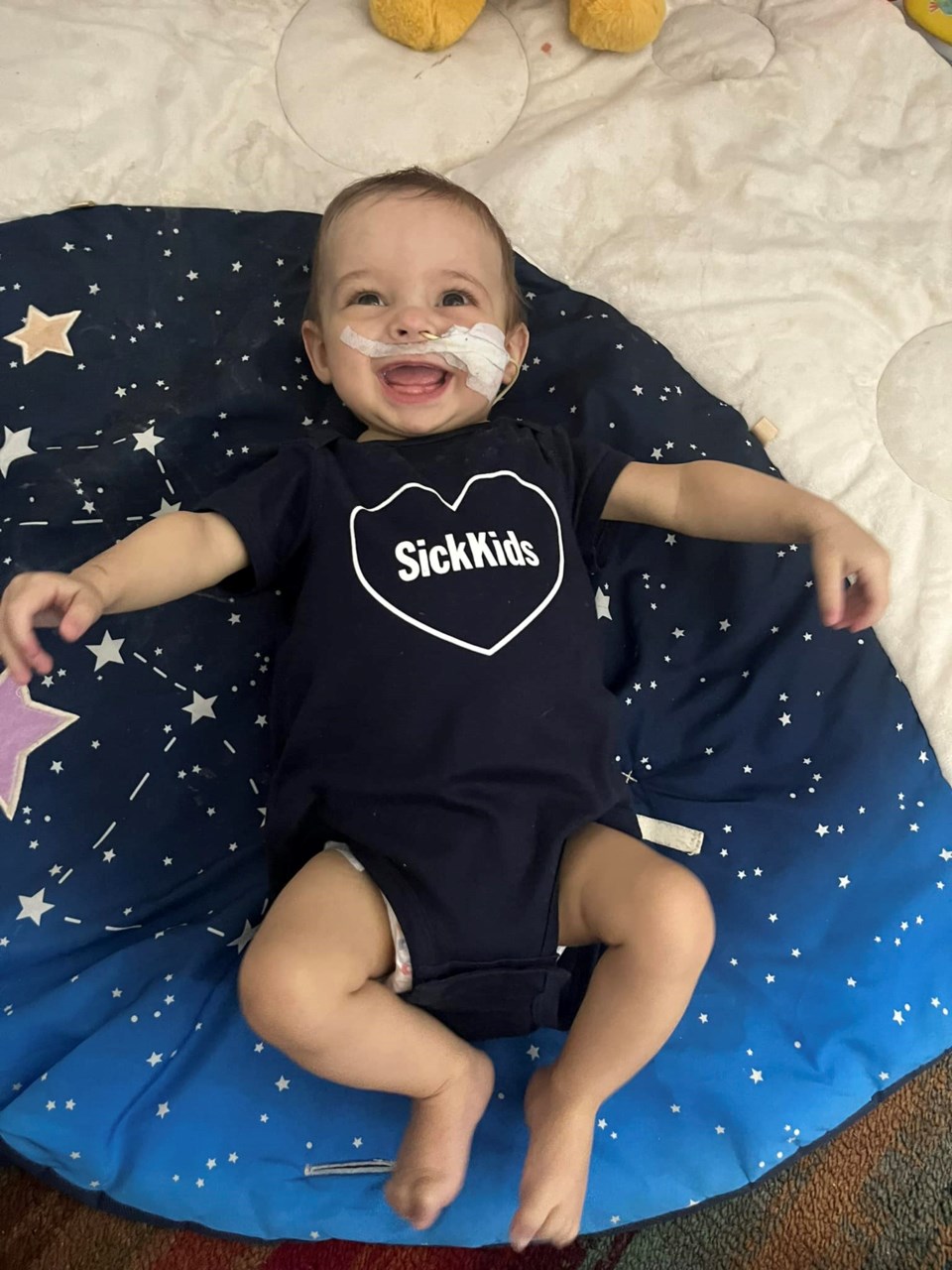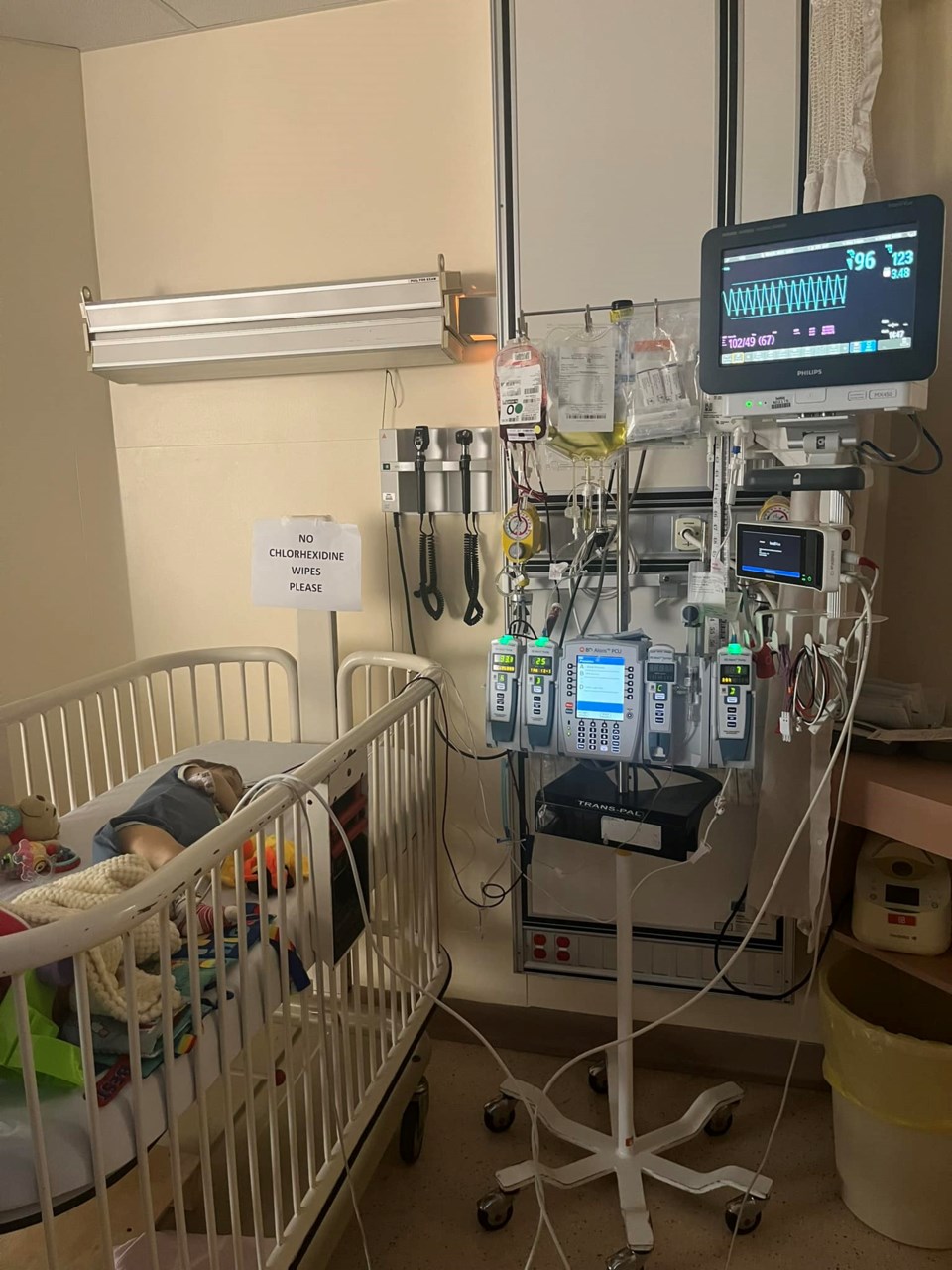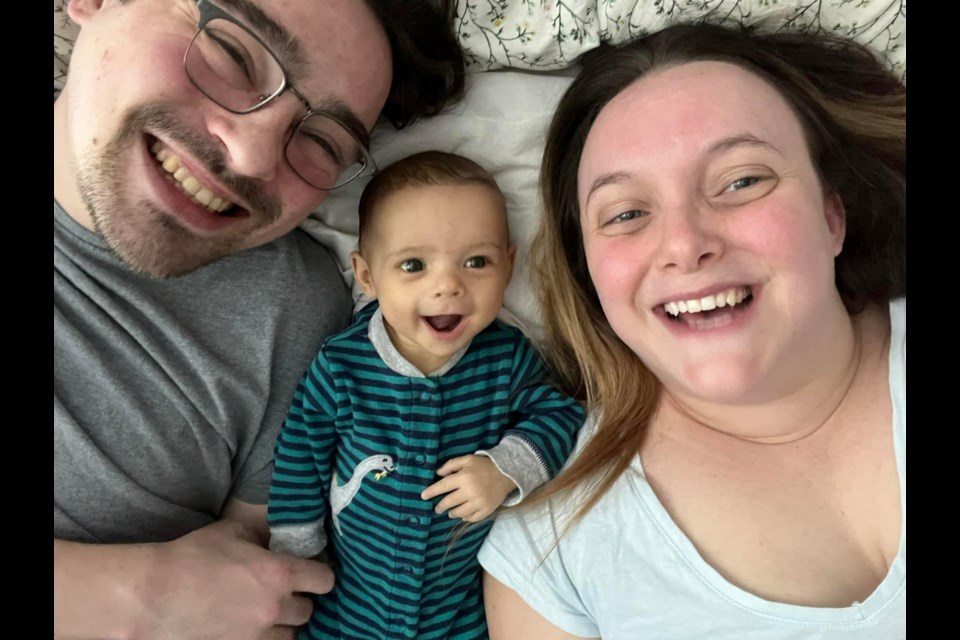A Guelph family is in the midst of a fight to save their young baby’s life.
And the hope is that through the battle, more people become aware of a rare form of liver disease and the importance of blood and organ donations.
Myles Beaulieu, who was born Aug. 25, 2023, has biliary atreisa, which impacts one in 10,000 to 20,000 infants.
Mighty Myles, as he has been dubbed, is in need of a liver transplant and the family is putting the call out for live donors to come forward.

“Outside of his diagnosis, he’s the happiest and sweetest baby ever,” said his mother Emily Vokey.
“I know I’m biased because I’m his mom, but we get nurses that we’ve never seen before coming into the room just to see him because they’ve heard there was an extremely cute baby on the floor.”
Myles and the family have been at SickKids Hospital in Toronto since May 25, and won’t leave until he gets a new liver.
“We kind of felt like something was wrong,” Vokey said. “He was very yellow, yellow in the eyes, yellow in the skin.”
The yellowing is called jaundice, and Myles was born with it. The family was sent home, but with multiple doctor’s visits, she said the jaundice was not going away.
Vokey said young Myles wasn’t gaining weight so he was taken to the ER. On Oct. 16, at just six and a half weeks old, he was diagnosed at McMaster Children’s Hospital in Hamilton.
“In biliary atresia, the bile duct that leads from the liver to the intestine becomes damaged preventing bile from leaving the liver,” the Canadian Liver Foundation notes on its website.
“In the early stages the bile duct outside the liver is mainly affected, but in later stages, bile ducts inside the liver are also damaged. This can lead to a build up of bile in the liver which can be harmful to the liver. Unless bile flow can be established, liver function is gradually lost and affected children rarely survive beyond two years of age.”
Myles went in for surgery shortly after diagnosis, and had what is called a Kasai procedure. It isn’t considered a cure, and many like Myles will still need a liver transplant.
Since the procedure, he was re-admitted a couple times to McMaster. In March, Vokey said the family moved Myles’ file to SickKids Hospital in Toronto.
“We spent about nine days there back in April, just to do a transplant assessment and NG tube insertion,” Vokey said.
“Unfortunately, he can’t eat. He actually doesn’t have an NG tube in right now because his belly … he can’t hold food. His spleen and his liver, especially his liver, are quite large. They’ve become really enlarged and his liver is starting to harden and he just doesn’t have the appetite or space to hold food.”
Myles gets all of his nutrients through a central line called total parenteral nutrition, or TPN for short.
He was admitted to SickKids on May 25 after catching a cold and was officially put on the transplant list.
Vokey said she is still wrapping her mind around the fact her son needs a transplant. She is thankful there are a lot more good days than bad days, and the support system – including Myles’ dad and her boyfriend Cody Beaulieu, family and friends – is key to get them through tough times.
“I couldn’t imagine being a single parent and having to go through what our family is going through,” she said.
The work to find donors has been ongoing. A website has been created to talk about Myles’ story and biliary atreisa.
“Our goal here isn’t to ask someone for a liver outright, we’re asking people to share our story, and what they do with that is up to them,” Vokey said.
A perfect match is needed for a liver transplant. Vokey said they’ve tried through family and friends already, but nobody meets the criteria.

Myles needs someone with an A or O blood type, be between 16 and 60 years of age and be in good health.
“Generally the donors stay somewhere around five to six, seven days in hospital,” said Dr. Nazia Selzner, the medical director for live donor liver transplantation at the University Health Network’s Ajmera Transplant Centre in Toronto.
A liver donation doesn’t require the full liver, just a section of it. The procedure takes about six hours to complete.
The liver then regenerates, and depending on the person, a full recovery is said to take about three months.
“Unfortunately, there is the reality that there is not enough deceased organ donors … in Ontario, to meet the need for transplant,” Selzner said.
“The sad reality is that every year, we have about 25 to 30 per cent waiting list mortality rate, particularly in adults.”
This is why the living donor program was established, she added.
To remove any emotional connection, there is also the anonymous donor list you can put yourself on if you’d like to donate.
You can register to be a living liver donor on the UHN website.
And if you’re not a match for Myles, Vokey said you might be a match for someone else.
“It’s awful what we’re going through, but I know there’s some good that can be done here,” she said, whether that is spreading awareness about the condition, organ and blood donation and supporting places like SickKids and Ronald McDonald House and starting conversations.
“Bonus, if we can find a liver for Myles, that’s huge.”
